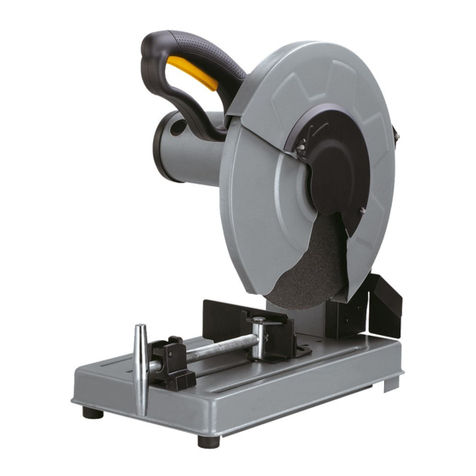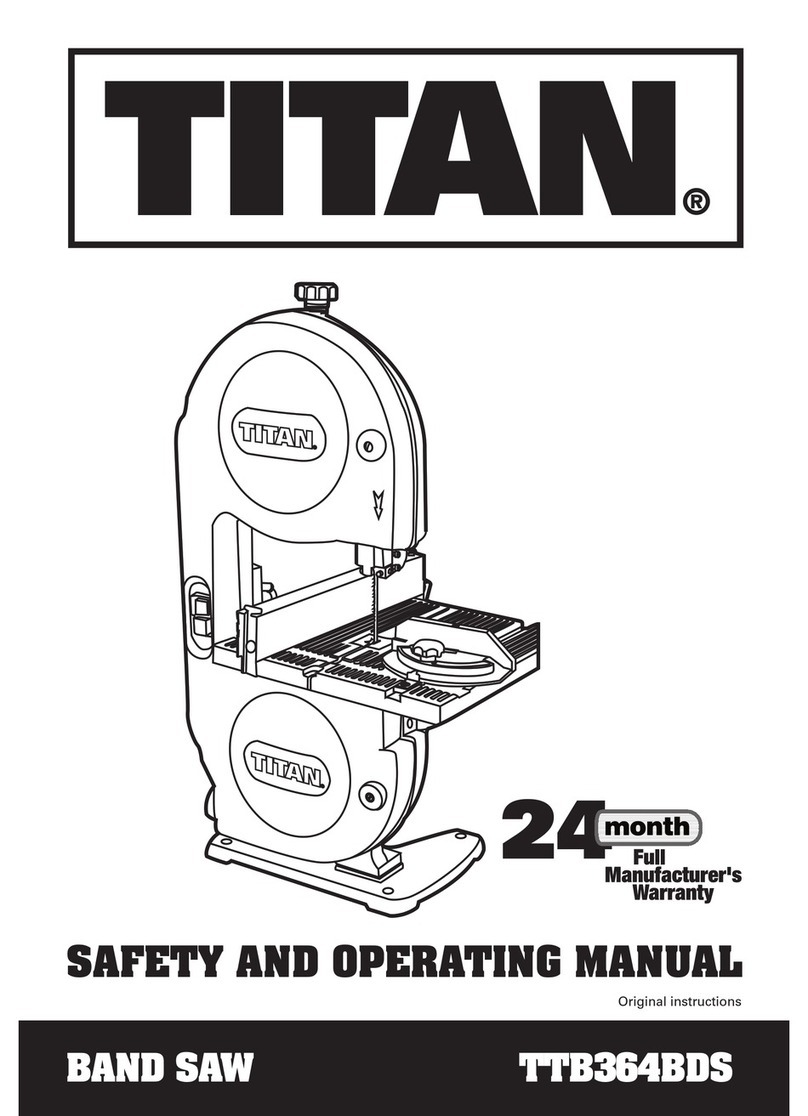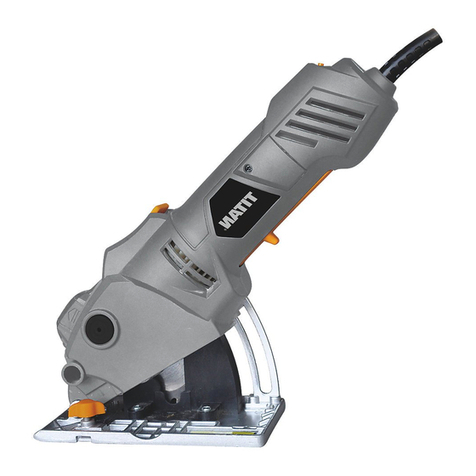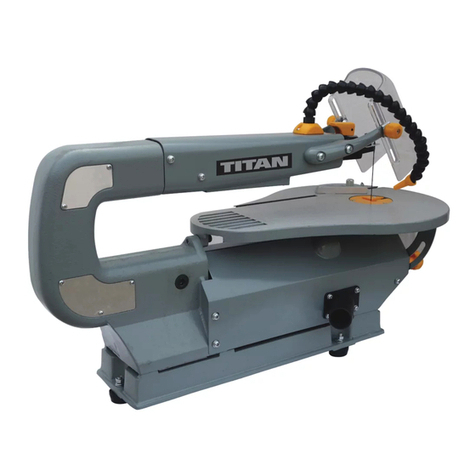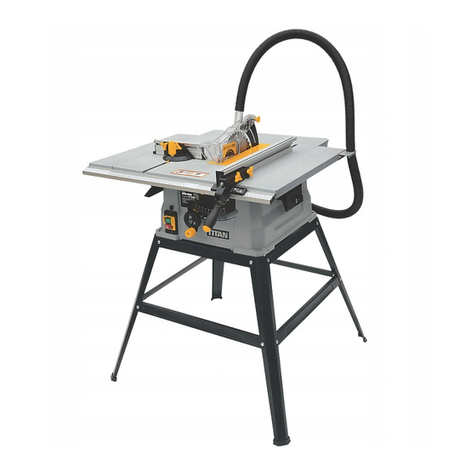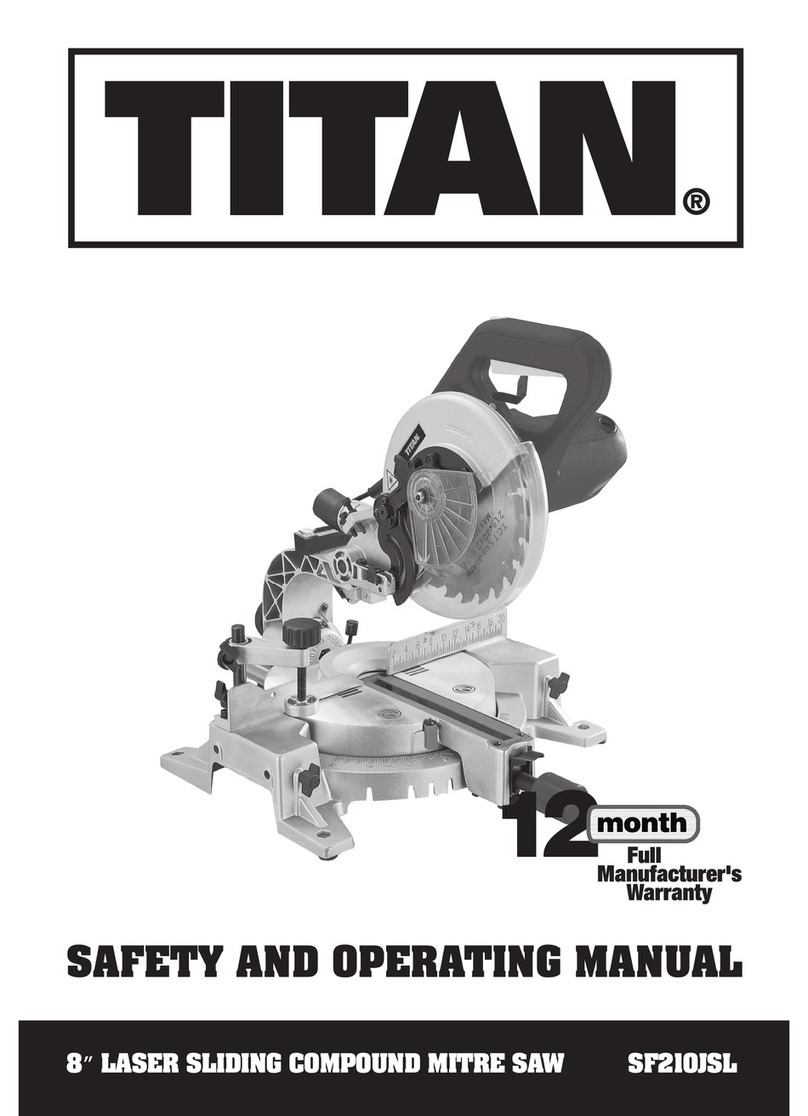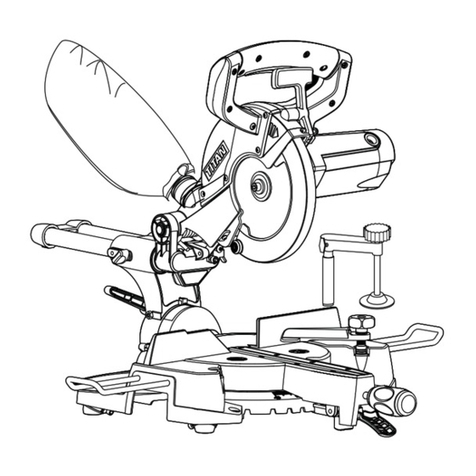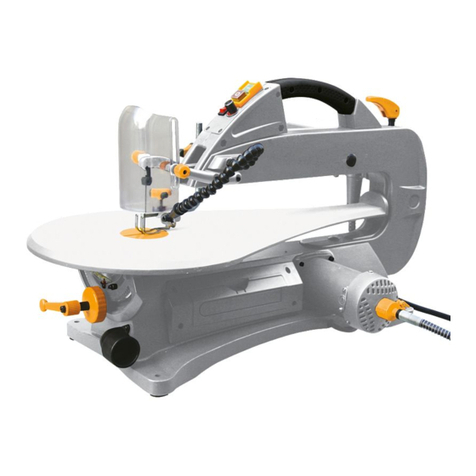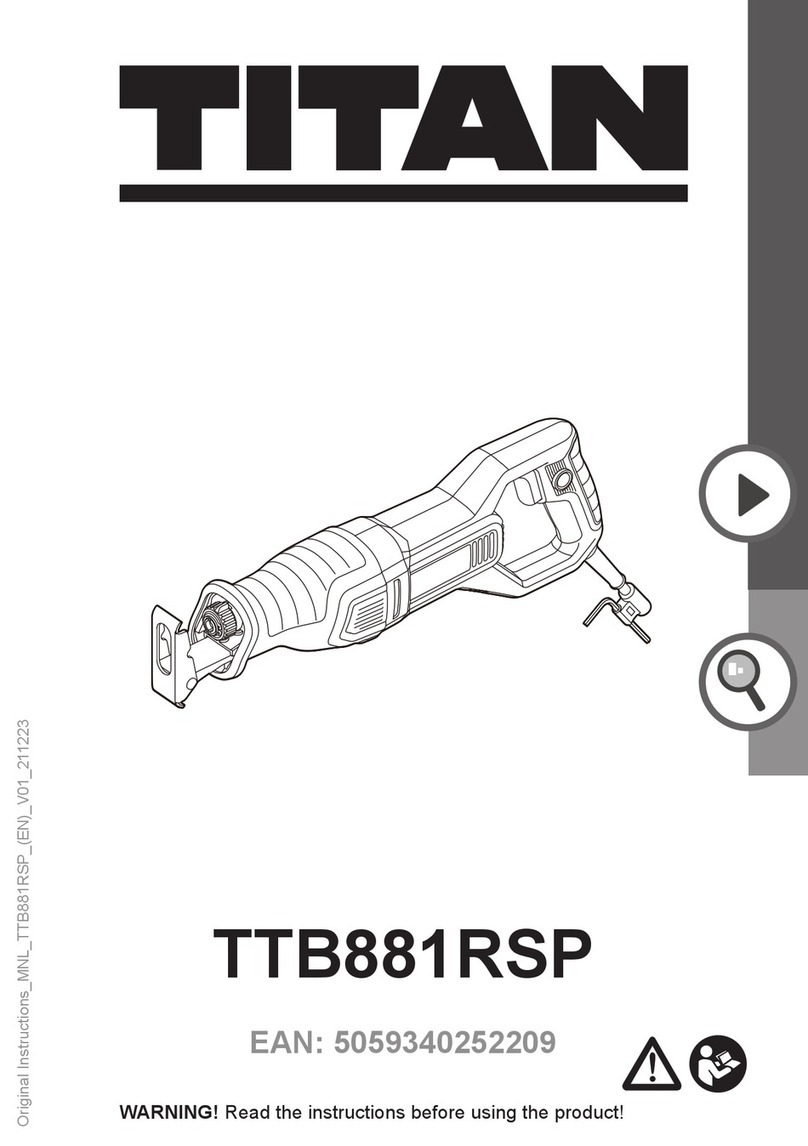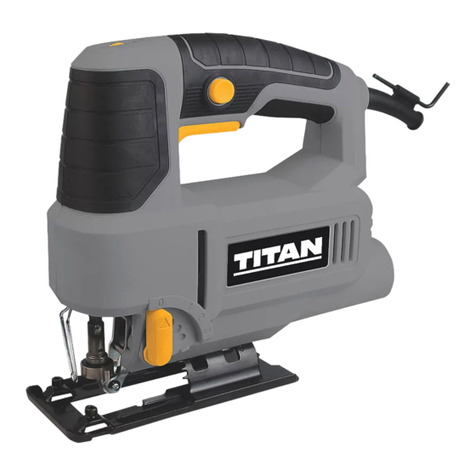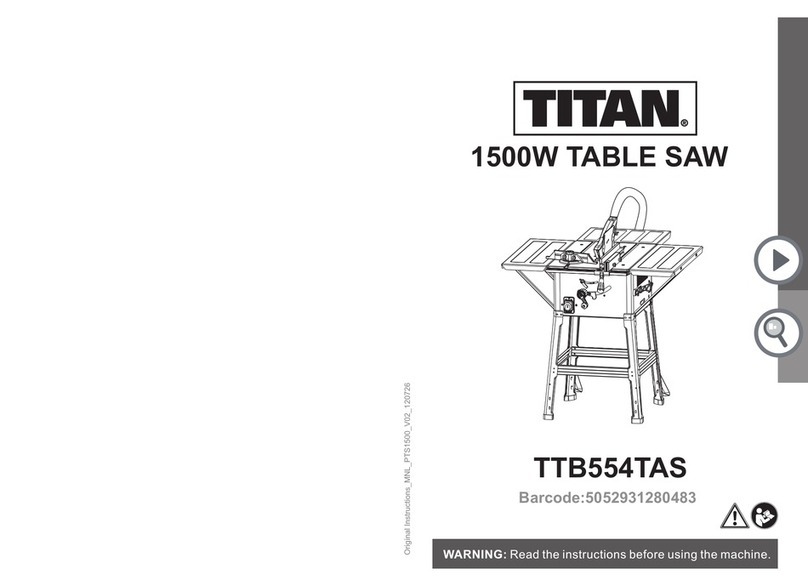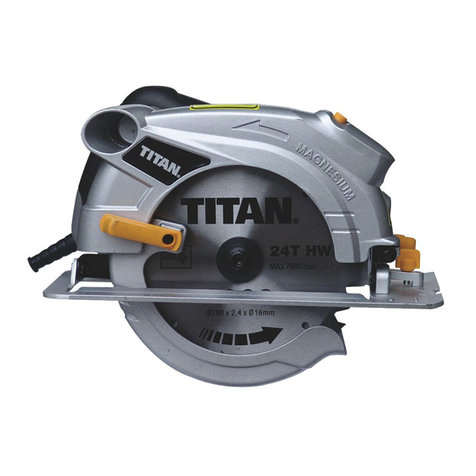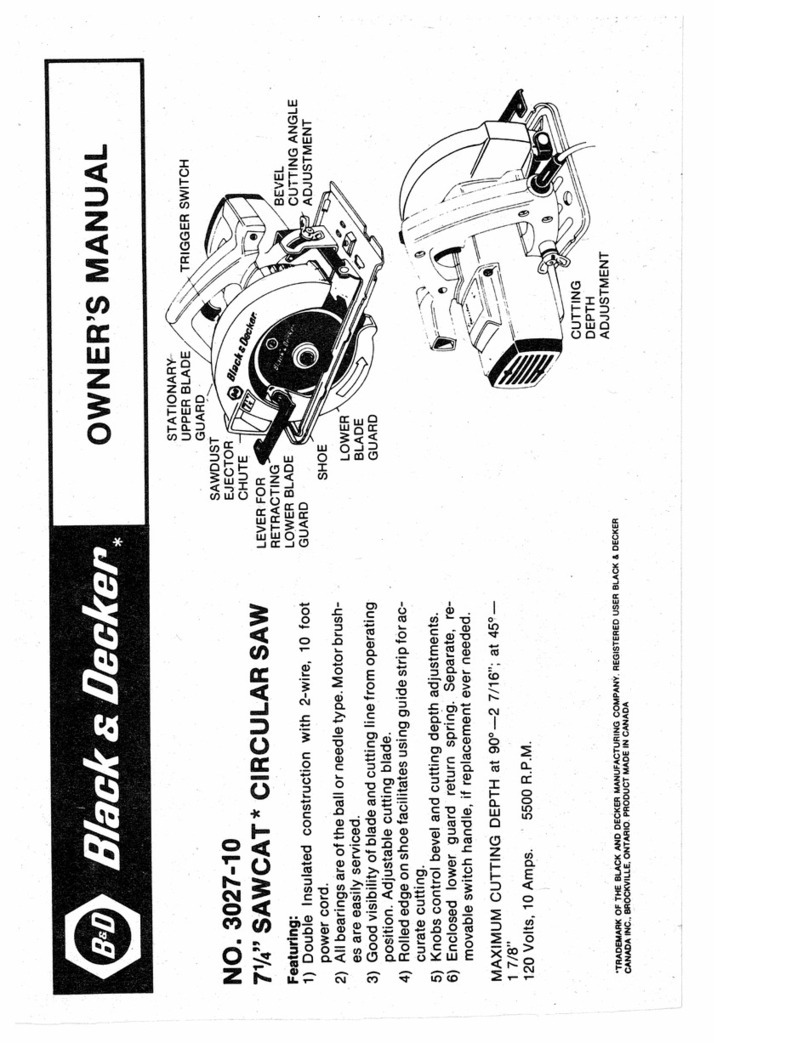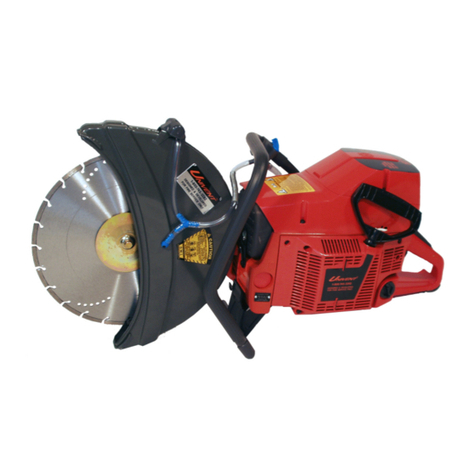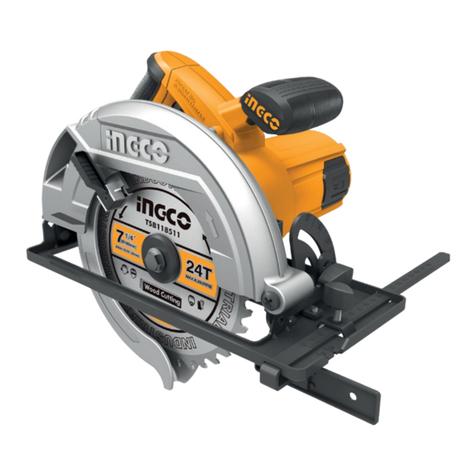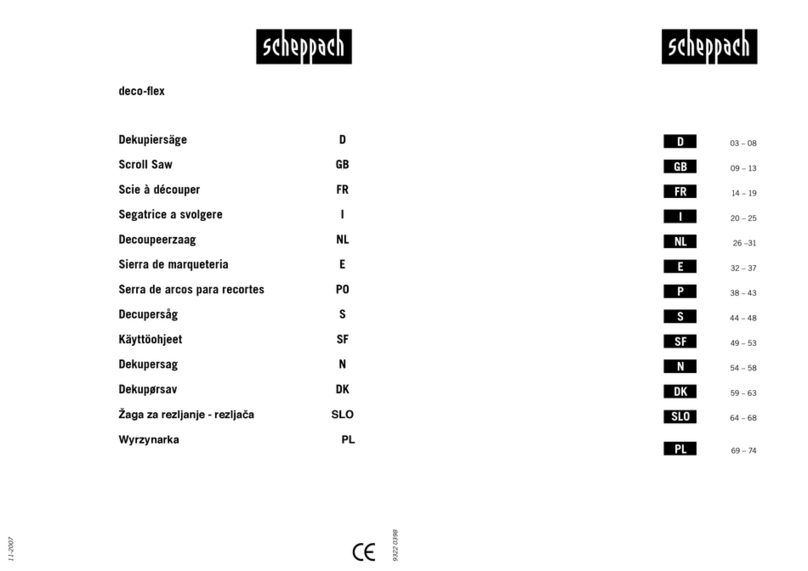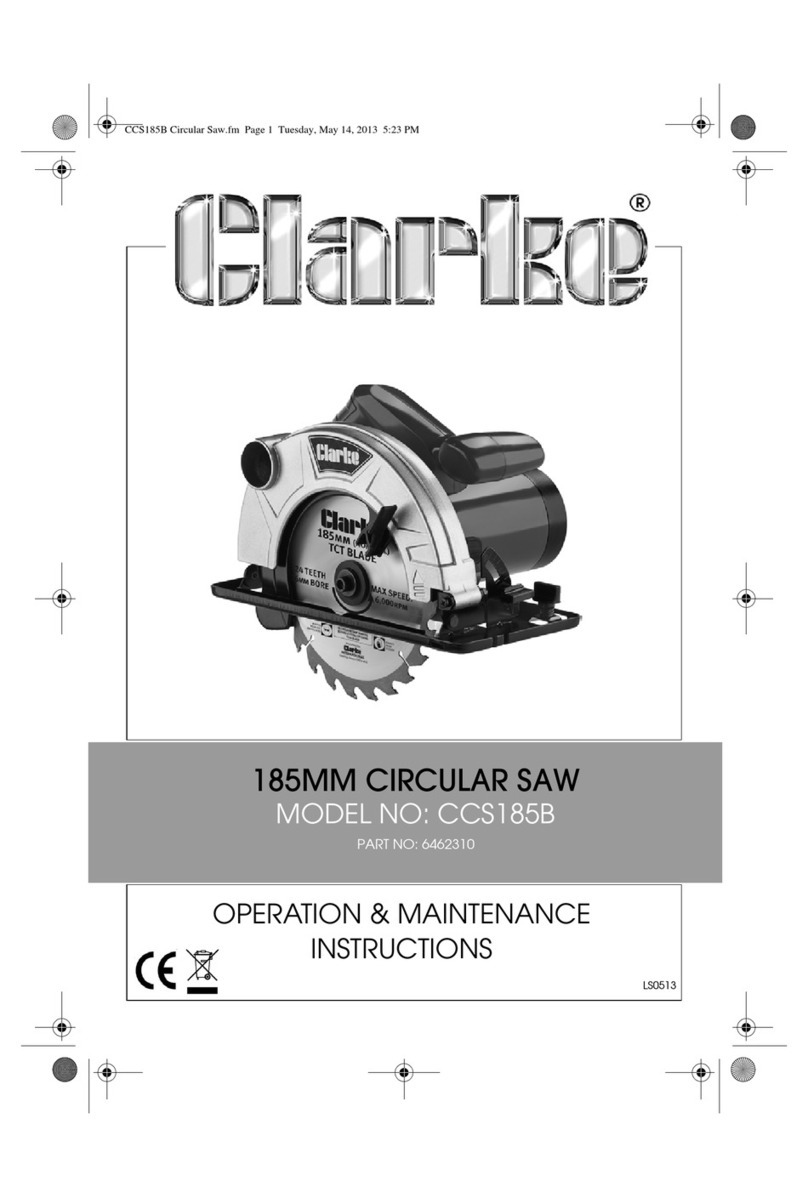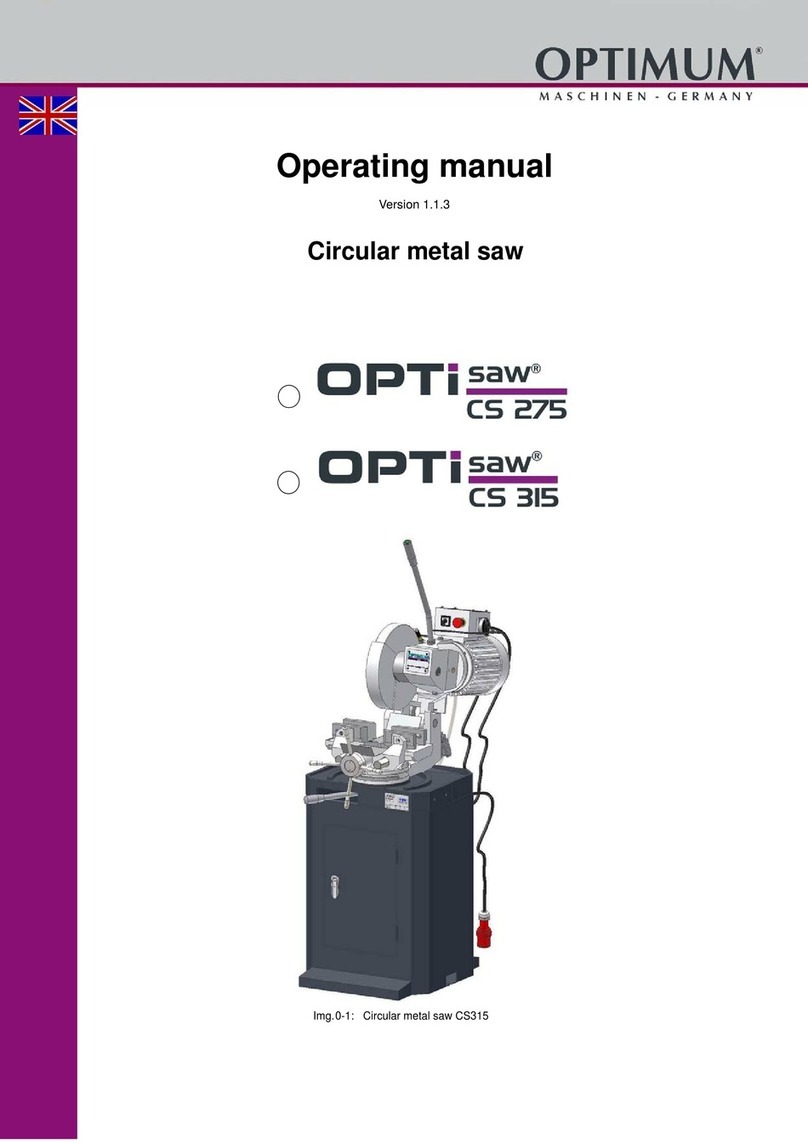
Kickback is the result of saw misuse and/or incorrect operating procedures or conditions and can
be avoided by taking proper precautions as given below.
a. Maintain a firm grip with both hands on the saw and position your arms to
resist kickback forces. Position your body to either side of the blade, but not
in line with the blade. Kickback could cause the saw to jump backwards, but kickback
forces can be controlled by the operator, if proper precautions are taken.
b. When blade is binding, or when interrupting a cut for any reason, release the
trigger and hold the saw motionless in the material until the blade comes to a
complete stop. Never attempt to remove the saw from the work or pull the
saw backward while the blade is in motion or kickback may occur. Switch off
and disconnect the power supply then investigate and take corrective actions to eliminate
the cause of blade binding.
c. When restarting a saw in the work-piece, centre the saw blade in the kerf
and check that saw teeth are not engaged into the material. If saw blade is
binding, it may walk up or kickback from the work-piece as the saw is restarted.
d. Support large panels to minimise the risk of blade pinching and kickback.
Large tend to sag under their own weight. Supports must be placed under the panel on
both sides,near the line of cut and near the edge of the panel.
e. Do not use dull or damaged blades.
Unsharpened or improperly set blades product narrow kerf causing excessive friction, blade
binding and kickback.
f. Blade depth and bevel adjusting locking levers must be tight and secure befor
making cut. If blade adjustment shifts while cutting, it may cause binding and kickback.
g. Use extra caution when making a “plunge cut” into existing walls or other
blind areas. The protruding blade may cut objects that can cause kickback.
ADDITIONAL SAFETY RULES FOR YOUR CIRCULAR SAW
1. Always wear a dust mask, hearing protection and eye protection.
2. Only use saw blades recommended in the specification.
3. Always wear gloves when handling saw blades and rough material. Saw blades shall be
carried in a holder whenever practicable.
4. Fully unwind cable drum extension to avoid potential overheating.
5. When an extension cable is required you must ensure it has the correct ampere rating for
your power tool and is in a safe electrical condition.
6. Ensure your mains supply voltage is the same as indicated on the rating plate.
7. Your circular saw is a hand held tool, do not clamp your circular saw.
8. Before cutting, check the cutting line is free of nails, screws, etc.
9. Do not cut small workpieces with a circular saw.
10. Only make cuts with the blade direction downwards, never upwards or at the side.
11. Only Use blades that have a rated speed higher than the power tools no load speed.
12. Never remove the guard system. Never use the saw if the guard system does not function
correctly. Never lock the moving guard open. The guard must move freely.
13. Never use saw blades made from high speed steel(HSS).
14. Always check walls, floors and ceilings to avoid hidden power cable and pipes.
15. After long working periods external metal parts and accessories could be hot.
16. Do not cut material containing asbestos.
17. Do not use metal or stone saw blades. Only use wood saw blades.
18. Do not use circular saw to cut tree limbs or logs.
